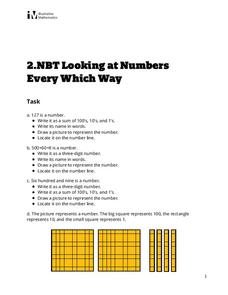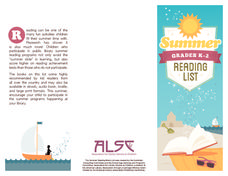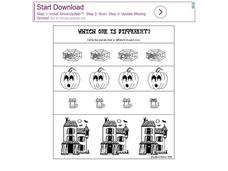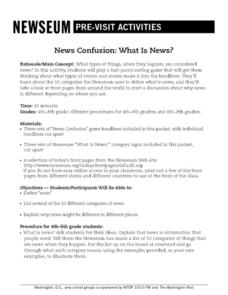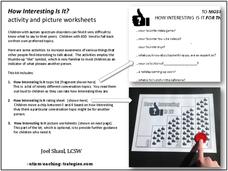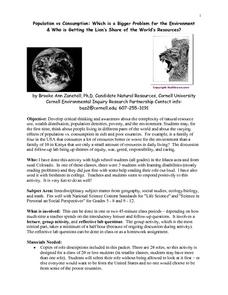San Francisco Public Utilities Commission
What is Drought? No Rain, No Water
How can climate change affect our water supply? Have kids read a passage about the water cycle and water conservation, which includes six questions that challenge them to use context clues.
Floyd County Schools
Who Is Hibernating?
Young scientists explore the wintertime behavior of common animals with this presentation on hibernation. Offering clear explanations about the who, what, where, when, and why regarding hibernation, this resource is perfect for primary...
National Nanotechnology Infrastructure Network
Understanding Wave Motion - Slinky vs. Snaky: Which Spring is Dominant?
Ride the wave to an understanding of refraction! The first in a series of two inquiry-based lessons challenges learners to create transverse waves with two different types of springs. As their wave hits an object, they observe the change...
Colorado State University
What Is Beyond the Rainbow?
Help your classes see what they cannot see. Using different eyewear, scholars experience different light spectrums. Learners may be surprised by how the world looks with infrared light, thermal imaging, and ultraviolet light.
Statistics Education Web
Which Hand Rules?
Reaction rates vary between your dominant and nondominant hand ... or do they? Young scholars conduct an experiment collecting data to answer just that. After collecting data, they calculate the p-value to determine if the difference is...
Illustrative Mathematics
Looking at Numbers Every Which Way
Assess class members' ability to look at numbers every which way. A helpful worksheet contain four tasks, including writing numbers as a sum of 100's, 10's, and 1's, and drawing a picture to represent the number.
NASA
Feel the Noise
Can you hear it now? Young scientists experiment with sound waves using metal objects and string. They strike metal objects while they hold them and as the objects hang from a string to compare the sound. They discover that sound travels...
Code.org
The Internet Is for Everyone
What is this thing called the Internet? A KWL activity elicits what the class knows about how the Internet works. Then pupils read a copy of a memo about the need to keep the Internet open and accessible by everyone.
NOAA
Importance of Deep-Sea Ecosystems – How Diverse is That?
When judging diversity of an ecosystem, both species evenness and species richness must contribute. After a discussion of diversity and a guided example using the Shannon-Weaver function, scholars use the same function on two other...
Generation Rx
Medication Safety Patrol: Is It Candy or Medicine? Game
Scholars play a sorting game designed to encourage safe medication handling. They browse pictures of candy and medication, then decide which of the two they're looking at by raising a card labeled candy or medicine.
Code.org
What is Big Data?
Find out why Big Data is a big deal in the first installment of a 12-part unit that introduces young computer scientists to Big Data and demonstrates how it is useful. In pairs, class members research a big data tool to uncover the...
Teach Engineering
Biomimicry and Sustainable Design - Nature is an Engineering Marvel
Discover how copying nature can be beneficial to humans. Scholars read articles about examples of biomimicry and its potential applications. Along the way, they learn about Nature's Nine Laws and how they relate to biomimicry. This is...
Association for Library Service to Children
Summer Reading List Grades K-2
Keep your kids reading throughout the summer with a wonderful list of books! Youngsters can choose from 25 different titles, each of which is paired with publication information so that their parents, guardians, or librarians can easily...
Curated OER
Which Dinosaur is Different?
In this comparing same and different pictures worksheet, students observe rows of three dinosaurs, and determine which ones are different. Students solve 4 answers.
Curated OER
Valentine Differences
In this math activity, students choose which of three pictures is different. The pictures are in color and related to Valentine's Day. There are four questions.
Curated OER
Which One Is Different?
In this Halloween visual discrimination instructional activity, learners analyze 4 rows of similar Halloween pictures. Students circle the one in each row that is different.
Curated OER
Mixed Bags: Fiction and Nonfiction
The second in a series of three lessons from Scholastic comparing and contrasting fiction and nonfiction, this activity requires learners to read, write, and compare two books independently. After briefly reviewing the features of...
Newseum
News Confusion: What Is News?
Use headlines to help your learners understand what news is. First, present a list of categories to your class. Then instruct small groups to play a game in which they sort headlines into the categories. Discuss the result and examine...
Illustrative Mathematics
Making 22 Seventeenths in Different Ways
There is more than one way to determine a sum. Scholars demonstrate their understanding of the decomposition of fractions similar to the decomposition of whole numbers. The short task requires pupils to determine which sums of fractions...
Curated OER
How Interesting Is It?
Discussing topics that other people are interested in is a key social skill that can often be overlooked. Here is a resource that supports learners in developing this life skill by first prompting them to consider a wide range of...
K20 LEARN
Totally Different Stories: Perspective
Two stories by Kate Chopin provide high school freshmen with an opportunity to reflect on the importance of the perspective from which a story is told. Class members read "The Story of an Hour" and a passage from The Awakening, then...
Curated OER
Volume and Surface Area: Which Is More?
Students explore the volume and surface area of three dimensional figures. Through the use of video, students discover three dimensional shapes, their uses in real-life applications, and methods used to calculate their volume and surface...
Curated OER
Population Vs Consumption: Which is a Bigger Problem for the Environment & Who is Getting the Lion's Share of the World's Resources?
Students develop critical thinking and awareness about the complexity of natural resource use, wealth distribution, population densities, poverty, and the environment. They think about people living in different parts of the world and...
Illustrative Mathematics
What is a Trapezoid? (Part 2)
This collaborative activity investigates the meaning of a trapezoid and a parallelogram. It begins by presenting two different definitions of a trapezoid. Learners are to reason abstractly the difference between the two definitions and...







